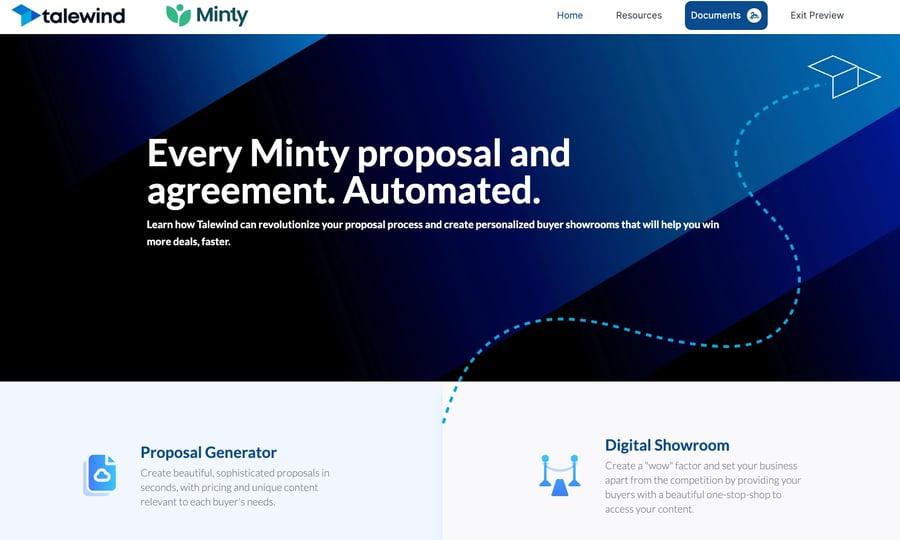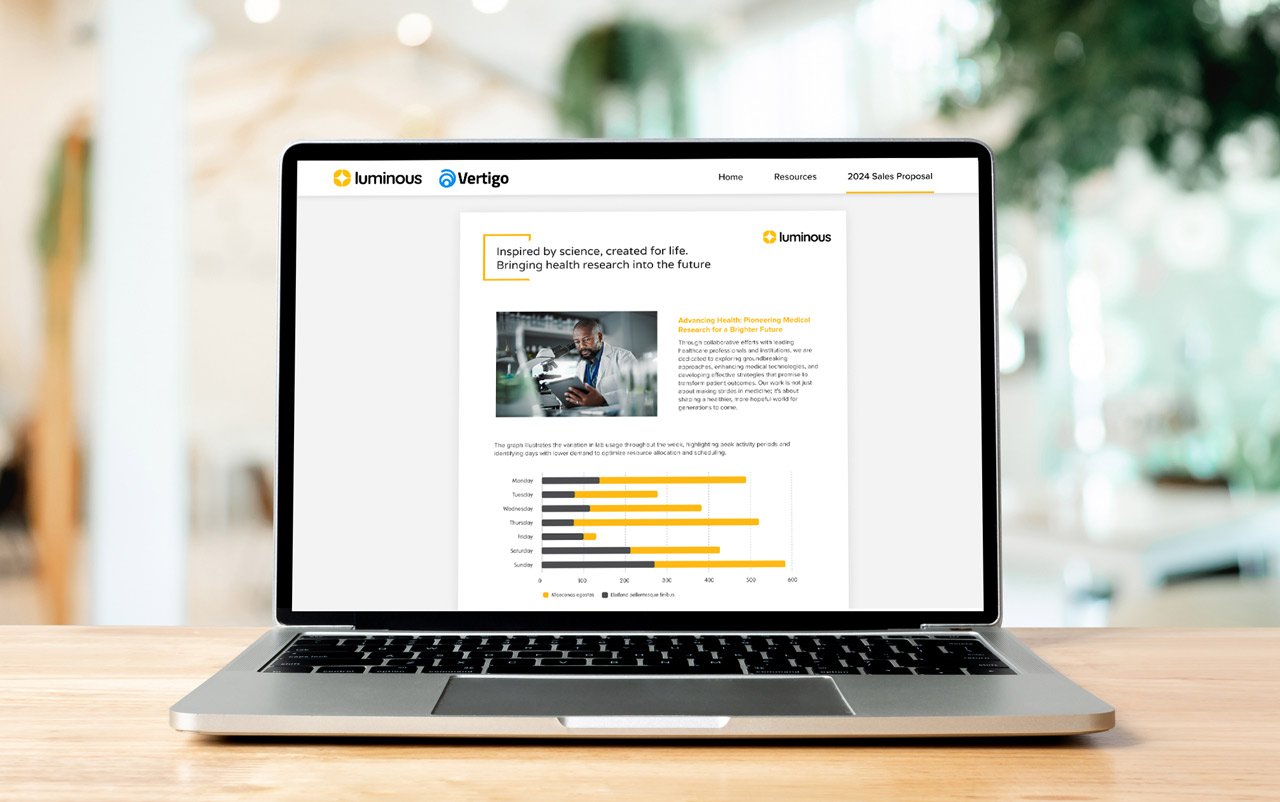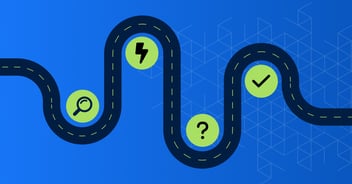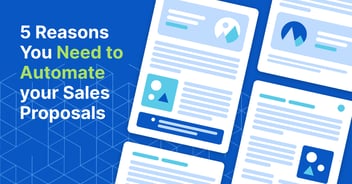How To Provide A Standout Buying Experience: 6 Best Practices

As a sales leader, you know that a critical area of sales is the customer buying experience, whether your team is selling to small businesses or large enterprises. The most pertinent part of this experience is your proposal because it’s where potential customers truly assess your capabilities. Failure to impress customers at this juncture means you’ve probably lost the deal.
Gartner research indicates that buyers only spend about 17% of their time meeting with potential suppliers when considering a purchase—and only about 5% to 6% of their time with any one sales rep. So your team has limited time to convince the buyer that your company has what the customer is looking for across the multiple quantitative and qualitative factors they’re considering—price, perceived service quality, team dynamics, and even the presentation of the proposal itself.
You want to make a positive, lasting impression with a buyer, so how do you ensure your best chance at winning their business? Get the answer in the guide below.
Take your proposals to the next level while also saving your team time in creating them with Talewind. Schedule a free demo today.
The Buyer Experience: Understanding Their Journey
First up, let’s go back to basics. The buyer journey starts with a problem, such as a struggle with inefficiency, technology woes, a process bottleneck, or any of a myriad of other issues that hinder performance or goal attainment.
How buyers identify this pain differs. For example, they may self-identify out of pure frustration. Alternatively, they may come to realize the problem after seeing or hearing an ad—e.g., Are you spending too much time doing X?
Then it’s time to search for a solution to this problem. What are the different approaches to solving it? Whether it’s a physical problem (efficiently moving one-ton rocks, for instance) or a digital problem (like using three different platforms to complete one business process), the buyer conducts research on how to overcome the challenge they're facing and home in on the type of solution that makes the most sense for their organization.
Knowing what the buyer has been through before getting to your sales team allows you to speak to them from a place of understanding. So when the buyer reaches out via social media, email, a contact page, or phone call—the next step in their journey—you can ask the right questions and queue them up to receive a proposal.
The request for proposal (RFP) stage of the buyer journey can be nerve-wracking. They’re likely comparing at least three potential vendors that offer the type of solution they identified as most fitting during their research. Each proposal could include a number of resources in addition to the primary document—quote, sales presentation, statement of work, case studies, etc.
In addition, there are typically multiple parties involved in the final decision—a 2022 report notes that one-third of B2B buyers say that collaboration among decision-makers has increased since the pandemic. Multiple perspectives, competing priorities, and information gaps among the decision-makers are all additional things to consider.
3 Questions Every Buyer Wants AnsweredEvery buyer is most interested in three pieces of information when considering a purchase:
Your proposal must answer each of these questions, but the last question is the most important. You’ll be up against multiple competitors who are all making some of the same promises and likely offering a comparable quote. So the answer to the last question is often what helps the buyer make their final decision among similar options. |
So assuming you’ve properly set buyers up to review your proposal, what can you do to have it stand out among competitors, fully address their questions, and make their reviewing experience as easy as possible? Keep reading for key recommendations.
6 Best Practices For Perfecting Your Proposal In The Buying Experience
1. Clearly explain the “why” of your business.
“People don’t buy what you do; they buy why you do it. And what you do simply proves what you believe.”
—Simon Sinek
This quote underscores the importance of what motivates your offering. This will tie back to your company vision. To your buyer, you and your competitors offer essentially the same thing—the what—so the why becomes an important point of distinction for the buyer to connect with.
2. Focus on how your offering makes the buyer’s life easier.
Many companies fall into the trap of simply detailing features of their product or service. But how is what you do beneficial to the buyer? If you’ve gained a deep understanding of their business, you should be able to point out how your offering will make their problem a thing of the past and enrich their lives in kind.
3. Empower the buyer to control their buying experience.
Research has shown that virtually 100% of buyers want to self-serve at least part of the buying journey. Putting them in the driver’s seat, then, can be a good thing.
Rather than relying on a cluttered, disjointed collection of previously exchanged emails to convince buyers, convey your value proposition in a comprehensive, professional manner via a digital showroom. A digital showroom is a centralized, branded location online that allows buyers to become intimately familiar with your product or service and convinces them to engage with your business. Talewind’s digital showroom platform not only gives buyers control over reviewing your proposal, but also helps you deliver proposal materials seamlessly.

Once you prepare all your materials and place them in your showroom, you can send your buyer a single link to access it. The entire buying team will be able to explore everything you’ve made available so no information falls through the cracks of endless email chains—information that could mean the difference between a sale or no sale.
4. Build a solid rapport.
Likability and trust are powerful sales drivers. Much like how people buy the “why” behind what you do, they also buy from people with whom they connect. All else being equal, a buyer will choose the vendor they like the most or who they trust will deliver on their promises.
5. Provide a stunning presentation.
Never underestimate the power of an error-free, aesthetically pleasing proposal. Those that appear to have been crafted with care and diligence will always stand out from the competition.
Talewind’s digital showrooms are easily customizable—you can add a prospect’s logo, font, and other branding elements so the environment looks and feels familiar.

In addition, Talewind automates the proposal creation process. This cuts down on not only grammatical errors, but also content errors that could communicate incorrect service details to the client—for example, saying you will deliver work you didn’t budget for in your quote.
6. Deliver your proposal quickly.
Every day that goes by without a proposal in hand is another opportunity for your nimbler competitors to win the sale. If most of the buyer’s team has already reviewed two other proposals and like what they see, why wait for yours?
Talewind’s automation enables you to turn around proposals quickly. Instead of taking a full business week or several days to create proposals, your sales team can reduce their time commitment to a single day or even less than an hour in the case of less complex proposals.
Make the proposal phase of your buyer’s experience simple
Talewind enables you to deliver impressive proposals quickly so you can be the shining example to which buyers compare your competitors. Give the entire buying team a one-stop shop to get answers to their sales questions and learn more about your business in impressive fashion with a stunning digital showroom.
Schedule a free demo of our proposal automation solution today.



